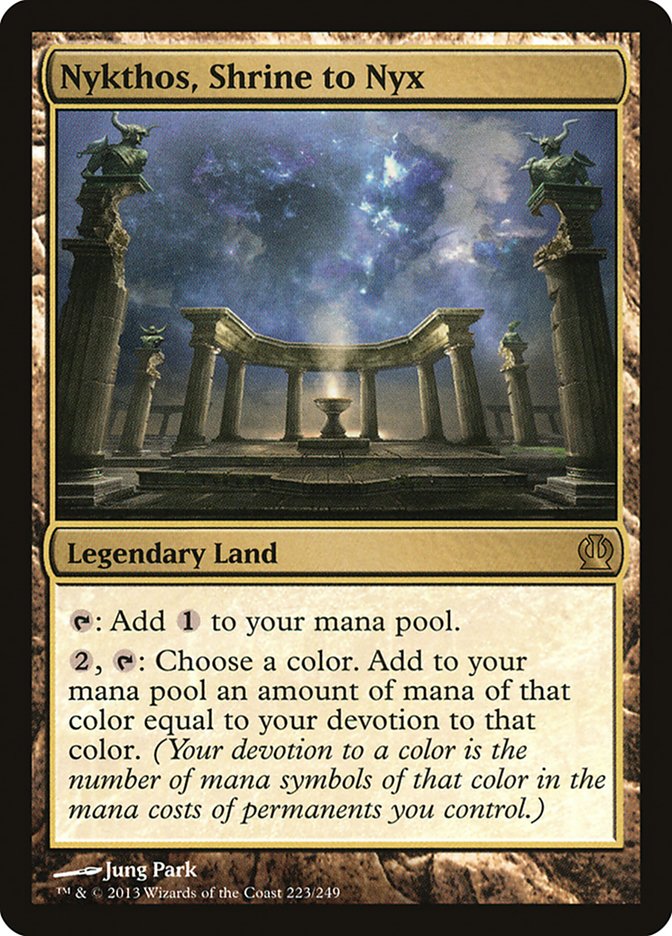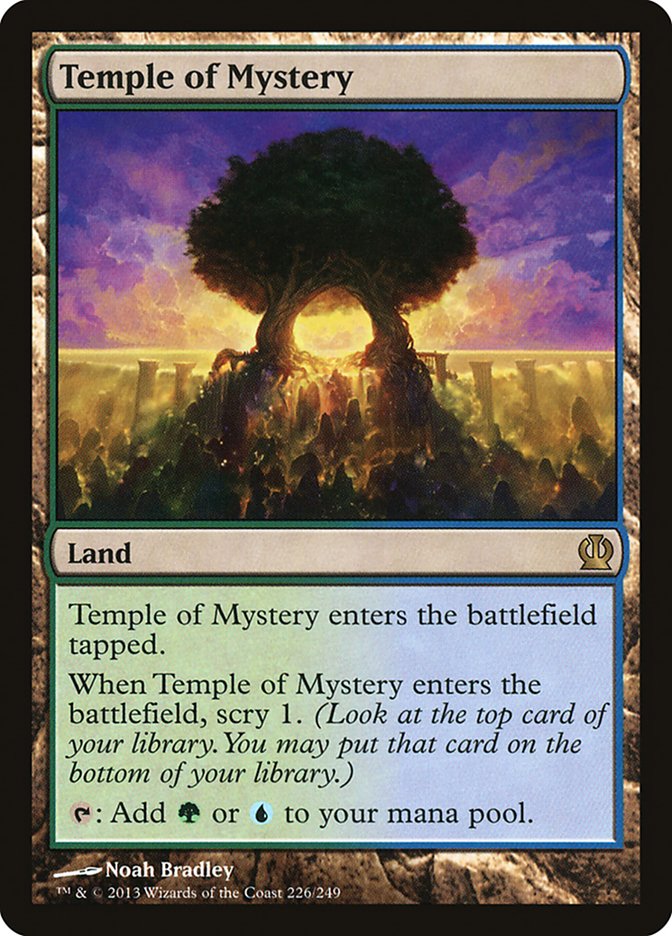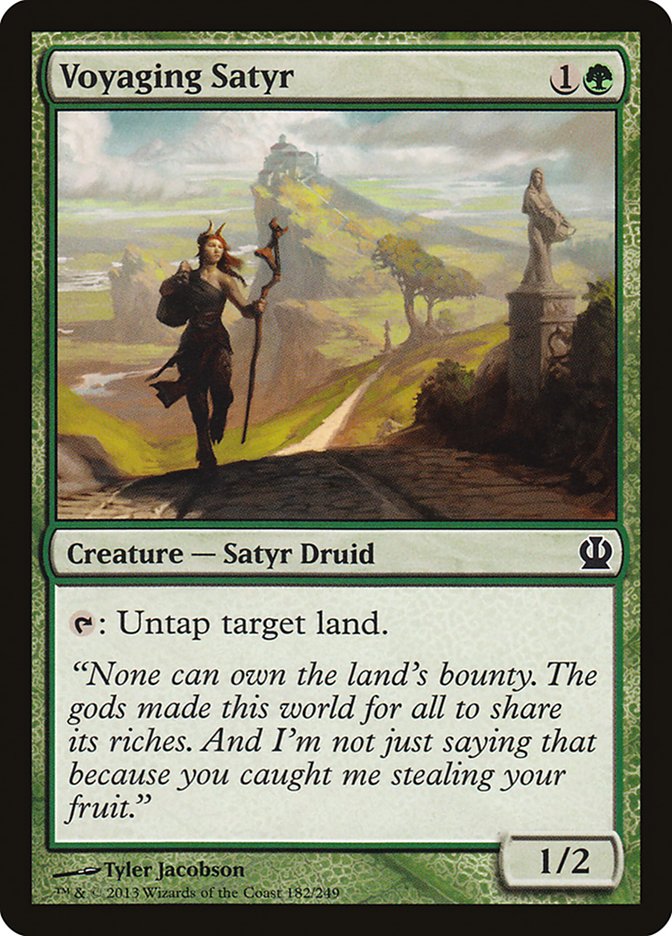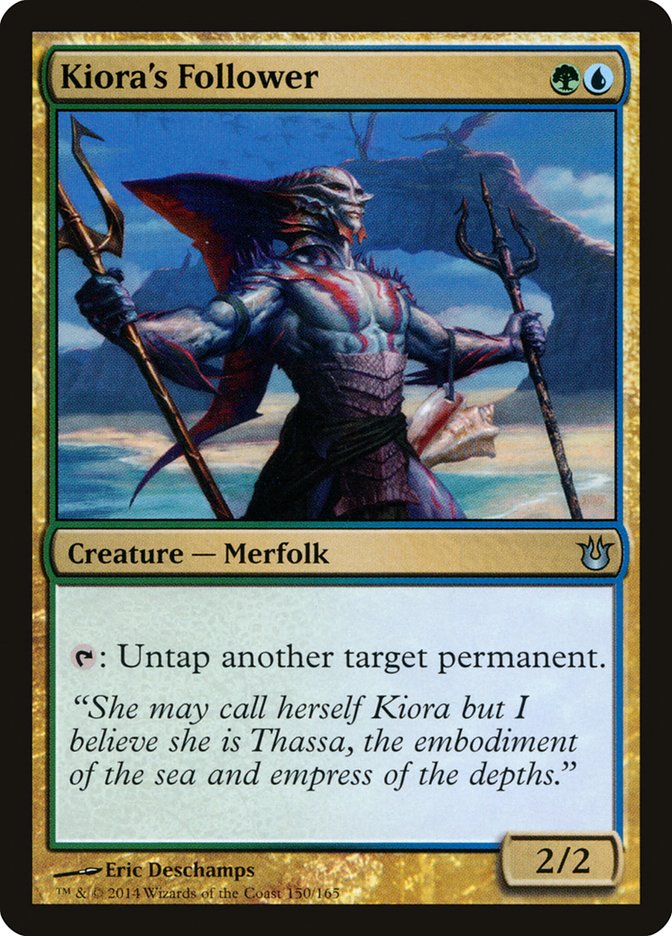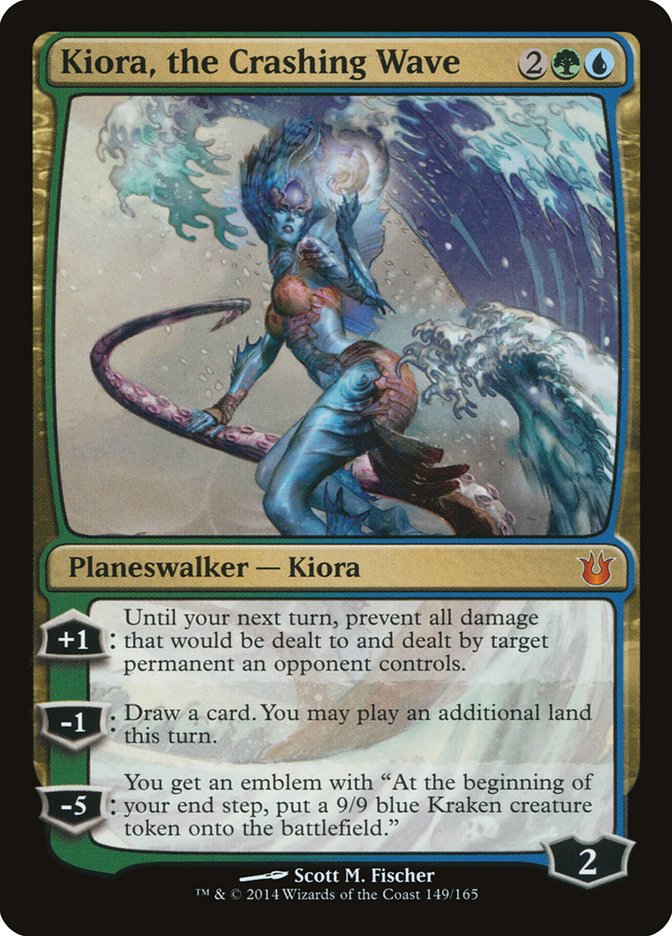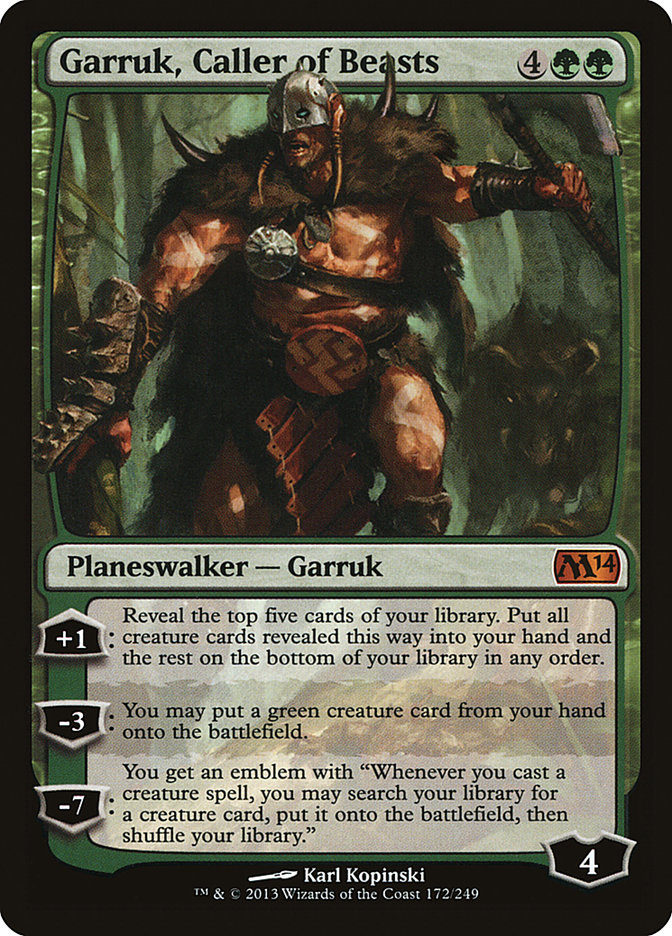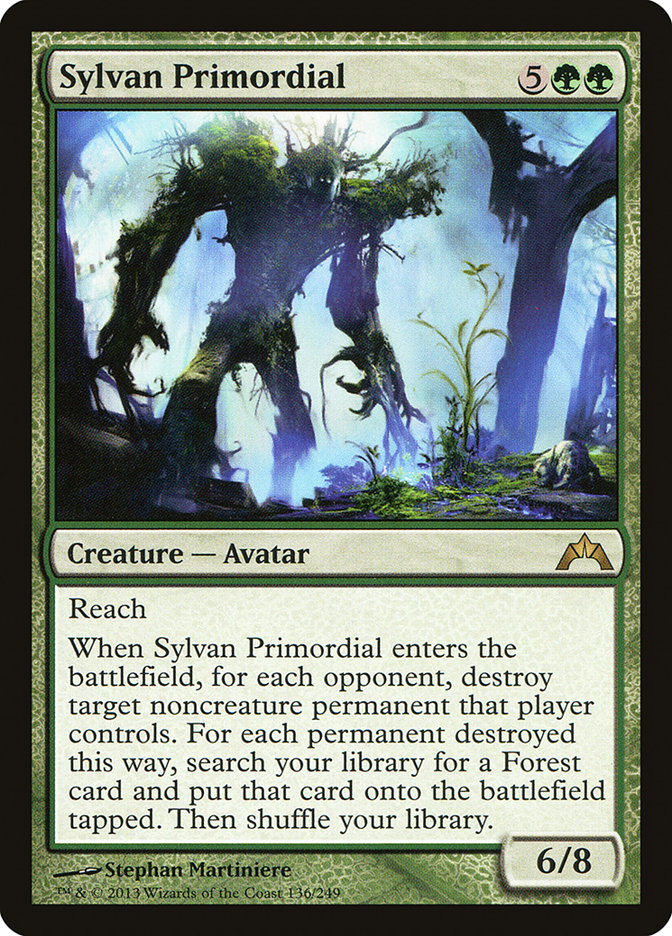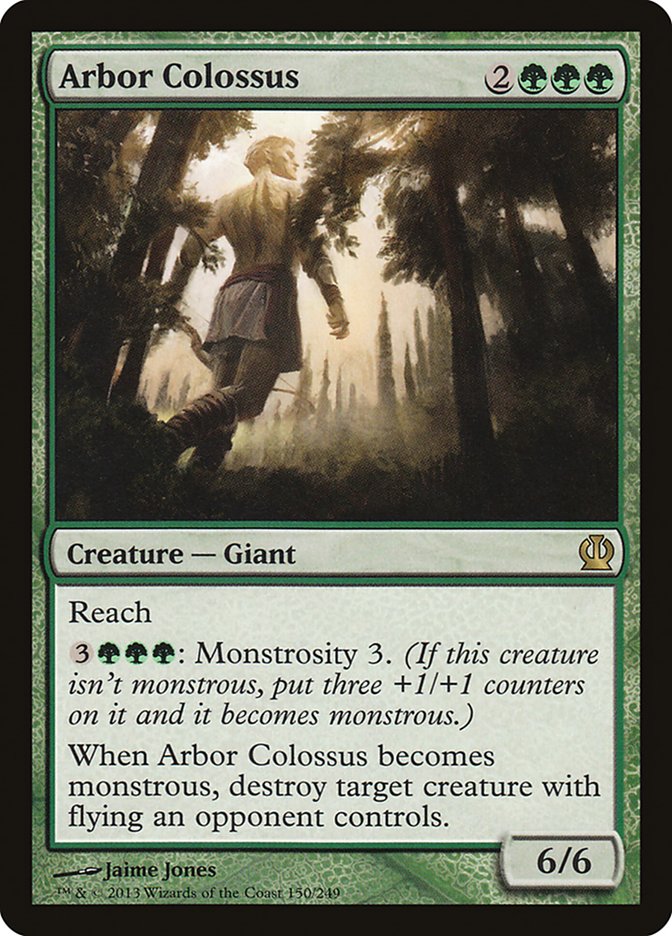Standard is changing week by week as new decks rise to the top and popular archetypes are tuned to gain an edge on the competition. Two weeks ago at SCG Standard Open: Seattle, R/W Burn, a deck that had kind of fallen off the radar, took down the event. But as well all know, Esper Control is now all the rage after a stellar weekend at Grand Prix Cincinnati and SCG Standard Open: Los Angeles.
Looking at the list and having played a similar R/W deck before, I’m very impressed with the fact that it managed to dispatch the U/W and Esper Control decks along its way. However, the Top 8 in Seattle was filled with midrange and devotion decks, which is something the R/W deck is designed to prey on. As for me, I haven’t really switched off Esper colors in a while, and when I did, it was in favor of R/B Devotion, which I wrote about a few weeks ago.
The deck was a blast to play, and a few of my friends had success with it. Having access to Rakdos’s Return, Thoughtseize, and Slaughter Games made it feel like control decks were easy to handle, and it also had the tools to handle creature decks. The main problem with the deck was that it had difficulty with midrange matchups. Many of the midrange decks have the ability to apply some sort of pressure while destroying your devotion plan, thus preventing you from really getting anything going. Since R/B was something I was very interested in and not something I wanted to give up on, I looked a bit a further and spoke with Grand Prix Providence Team Sealed champion Eric Berger about it.
Eric’s been a big fan of B/R since Theros and took the approach of a more midrange style build rather than devotion. He and I felt it had both the answers and the threats to be perfectly set up for the current metagame. This thought was backed up by some solid results, as Eric managed to Top 8 a PTQ with it and two weeks ago it made an appearance in the Top 8 of Grand Prix Buenos Aires.
Let’s take a look at Eric’s base list before getting into the one I would suggest you play this weekend at the SCG Invitational in Charlotte.
Creatures (11)
Planeswalkers (2)
Lands (25)
Spells (22)

As I mentioned above, the deck has many things going for it.
- Great threats: Desecration Demon, Stormbreath Dragon
- Hard to answer threats: Mutavault; Rakdos Keyrune; Chandra, Pyromaster
- Fantastic disruption: Thoughtseize, Rakdos’s Return, Slaughter Games
- Efficient removal: Dreadbore, Hero’s Downfall, Anger of the Gods
B/R Midrange also attacks from a unique angle. As I talked about earlier, many of its threats are very difficult to deal with. Desecration Demon is big enough to avoid many burn spells, Stormbreath Dragon dodges Detention Sphere, and both Mutavault and Rakdos Keyrune get around the sorcery speed mass removal of the format (Supreme Verdict and Anger of the Gods). But that’s not all! Due to the discard aspect of the deck, you’re able to clear the way for whichever threat you’re trying to resolve and stay on the battlefield.
Let’s take a look at my list with a few updates for the current metagame:
Creatures (11)
Planeswalkers (2)
Lands (25)
Spells (22)

Most of the changes I made are minor, as the deck stayed pretty much exactly in form. The addition of Whip of Erebos provides a threat in both the control matchups and the aggressive ones, where the life gain will tend to be very valuable. Besides that the sideboard has become a bit more wide open with versatile options like Ratchet Bomb. The second addition is Sire of Insanity, which will shine in midrange matchups as well as control. If at any point you’re ahead in the game, Sire of Insanity will make it so you can close it out. It’s especially nice since you can ramp to it thanks to Rakdos Keyrune and gain additional card advantage with Underworld Connections and Chandra, Pyromaster.
When playing this deck, one of the main things you need to remember is that you’re in no rush to win any games. Damage racing should not really be something you’re concerned about. What you should care about is slowly grinding them out while gaining advantage with cards like Chandra, Pyromaster; Read the Bones; and Rakdos’s Return.
This deck really preys on all the U/W and Esper Control decks that are floating around right now. But as talked about earlier, it can be sculpted after sideboarding to crush the aggressive decks as well. The one hidden card that really makes me happy to have in this deck is Lifebane Zombie. With players loading up on Blood Baron of Vizkopa to keep Mono-Black Devotion at bay along with Obzedat Ghost Council and a slew of big green monsters, Lifebane Zombie is just one of the best creatures you can be playing in Standard.
For a while I toyed with the idea of adding white to the deck for some of the cards mentioned above plus Elspeth, Sun’s Champion and a handful of sideboard options. But after analyzing things some more, I realized that it simply isn’t worth it. With the addition of white, you aren’t really getting too much, and you’re negatively effecting your mana base and opening yourself up to the power of Lifebane Zombie when you don’t need to.
The other deck I’d like to present today is a powerful brew that is unexpected, exciting, and dangerously delicious. It was worked on heavily by friend Ed Sterner and is none other than G/U Devotion! There are a few lists of this out there since people tend to brew in Standard quite a bit, but I truly feel this deck is one of the hidden gems of the current Standard format.
Creatures (30)
- 2 Prime Speaker Zegana
- 2 Sylvan Primordial
- 4 Elvish Mystic
- 4 Polukranos, World Eater
- 1 Nylea, God of the Hunt
- 4 Sylvan Caryatid
- 3 Arbor Colossus
- 4 Voyaging Satyr
- 2 Kiora's Follower
- 4 Courser of Kruphix
Planeswalkers (5)
Lands (23)
Spells (2)

Yes, you may look at this deck and see multiple cards that don’t normally see Standard play. Maybe they used to, or you thought, "Hey! That card could be good! Why is no one playing it?" Well, now you get to play that special card.
The best part about this deck is that many of your draws are incredible and will really punish your opponent for not having the exact answer at the right time.
Sorry Rudy: Don’t have a removal spell for my mana accelerant on turn 2? Here comes a huge threat on turn 3.
Sorry Rudy: Don’t have a Supreme Verdict for my Arbor Colossus? Now it’s too late because Prime Speaker Zegana just drew me a new hand!
Let’s break down each card’s role in the deck so you can better understand how the deck really works.
The Lands
The mana base is pretty straightforward with eleven basics, eight duals, and four copies of Nykthos, Shrine to Nyx. If you’ve played any deck centered on Nykthos, this is typically what they all look like.
Mana Acceleration
The goal of this deck is to dump your hand and play giant threats as quickly as possible. By having fourteen ways to speed you up, the deck becomes more and more explosive. I would love to have four copies of Kiora’s Follower since it’s a super powerful accelerant, is able to untap Nykthos, and can actually get in there for some relevant damage. However, since blue is basically our splash color, it’s sometimes difficult to cast it on turn 2 and it is better to go the safer route and max out on the number of Voyaging Satyr and Sylvan Caryatid first.
The Planeswalkers
Both planeswalkers are very important to the deck since they do what planeswalkers are supposed to do for you: be super awesome and help you win games. I wanted to add a fourth copy of Kiora, the Crashing Wave to the deck, but with the four-mana slot being filled with other great threats and the deck being very tight in general, three is a fine number.
Some version of Garruk has been crushing formats for a long time, and Caller of Beasts isnt much different. In this deck Garruk, Caller of Beasts really shines because it is filled to the brim with creatures (all but seven spells in the deck are creatures). Since the deck is so explosive, you rely on your planeswalkers to refill your hand and keep the pressure on the opponent. Besides that having planeswalkers allow you to come at the opponent from a different angle and makes it very difficult for them to answer all your diverse threats.
Non-Mana Creatures
Each creature in the deck plays a different role, but they all come together nicely. Courser of Kruphix is here to slowly build an advantage as the game goes on. The interaction with Kiora, the Crashing Wave is very synergistic, not only because it ensures you hit your land drops but because a 2/4 does a nice job of protecting Kiora itself.
Polukranos, World Eater plays a few roles in this deck. It’s a large threat that will come down on turn 3 a high percentage of the time, but more importantly it provides removal for the deck. Throughout the history of Magic, G/U decks have never really had access to good removal, but Polukranos has changed that.
The card is also great in tandem with Prime Speaker Zegana and Nylea, God of the Hunt. Polukranos can act as a huge body to make sure Prime Speaker draws a ton of cards or can trample over for tons of damage while providing the necessary devotion to turn Nylea on.
The powerhouse of creatures is rounded out by Arbor Colossus and Sylvan Primordial. Both hit hard and are useful in other ways. Colossus adds to your devotion and takes care of flyers, while Primordial does the same with flyers but also hits the annoying Detention Sphere and planeswalkers.
The Sideboard
The sideboard is pretty straightforward but gets the job done. Nylea’s Disciple is great against the aggressive decks in the format and does a good job against R/W Burn if they don’t have a Skullcrack at the ready. Mistcutter Hydra is great against the Sphinx’s Revelation decks as well as Mono-Blue Devotion, especially since we can generate so much mana.
Unravel the Aether and Negate are great options against control decks but can have an impact across numerous matchups. I especially like Unravel the Aether against the U/W Devotion decks that have popped up since you’re presented with so many targets. Last but not least are Rapid Hybridization and an additional Sylvan Primordial to help shore up the various Monsters matchups.
I think both of these decks are well positioned because people really aren’t prepared for them. They attack from a different angle, allowing you to catch your opponent off guard, and in a world filled with Esper Control and decks trying to beat it, I think that’s a pretty important thing to be doing right now.


